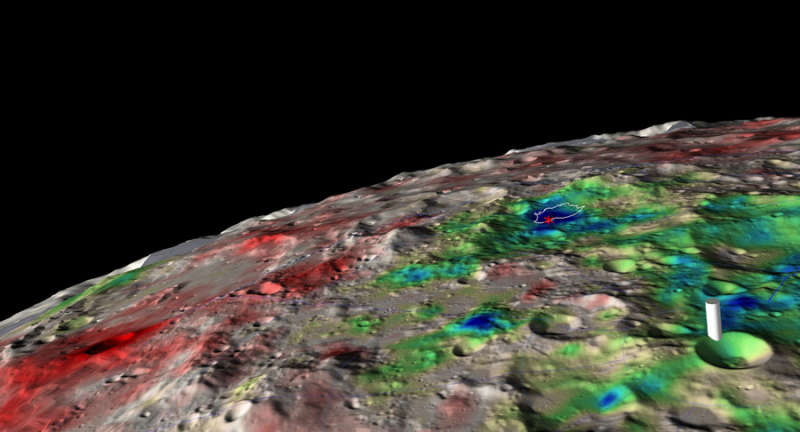Explanation: Is there enough water on the moon to sustain future astronauts? The question has important implications if humanity hopes to use the Moon as a future outpost. Last year, to help find out, scientists crashed the moon-orbiting LCROSS spacecraft into a permanently shadowed crater near the Moon's South Pole. New analyses of the resulting plume from Cabeus crater indicate more water than previously thought, possibly about six percent. Additionally, an instrument on the separate LRO spacecraft that measures neutrons indicates that even larger lunar expanses -- most not even permanently shadowed -- may also contain a significant amount of buried frozen water. Pictured above from LRO, areas in false-color blue indicate the presence of soil relatively rich in hydrogen, which is thought likely bound to sub-surface water ice. Conversely, the red areas are likely dry. The location of the Moon's South Pole is also digitally marked on the image. How deep beneath the surface the ice crystals permeate is still unknown, as well as how difficult it would be to mine the crystals and purify them into drinking water.
1999 2000 2001 2002 2003 2004 2005 2006 2007 2008 2009 2010 2011 2012 2013 2014 2015 2016 2017 2018 2019 2020 2021 2022 2023 2024 2025 |
Январь Февраль Март Апрель Май Июнь Июль Август Сентябрь Октябрь Ноябрь Декабрь |
NASA Web Site Statements, Warnings, and Disclaimers
NASA Official: Jay Norris. Specific rights apply.
A service of: LHEA at NASA / GSFC
& Michigan Tech. U.
|
Публикации с ключевыми словами:
Moon - water - water-ice - crater - Луна - лед - кратер
Публикации со словами: Moon - water - water-ice - crater - Луна - лед - кратер | |
См. также:
Все публикации на ту же тему >> | |
Мнения читателей [3]
